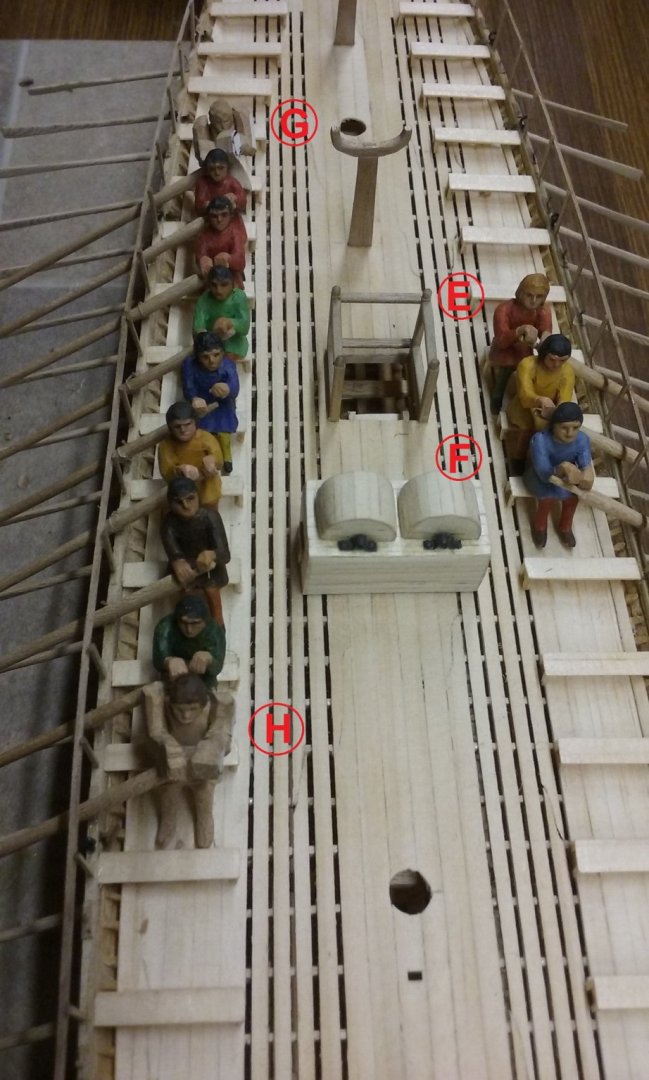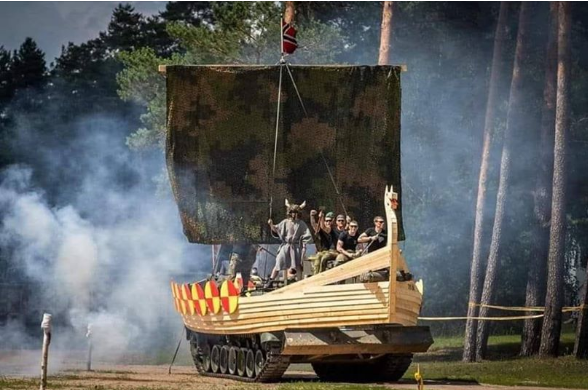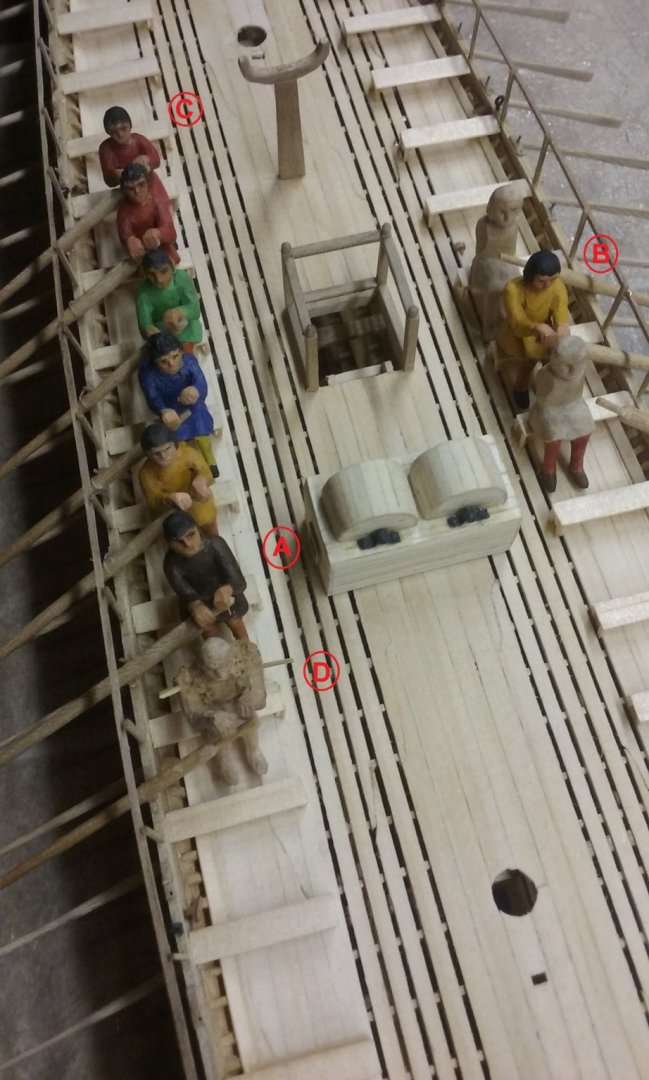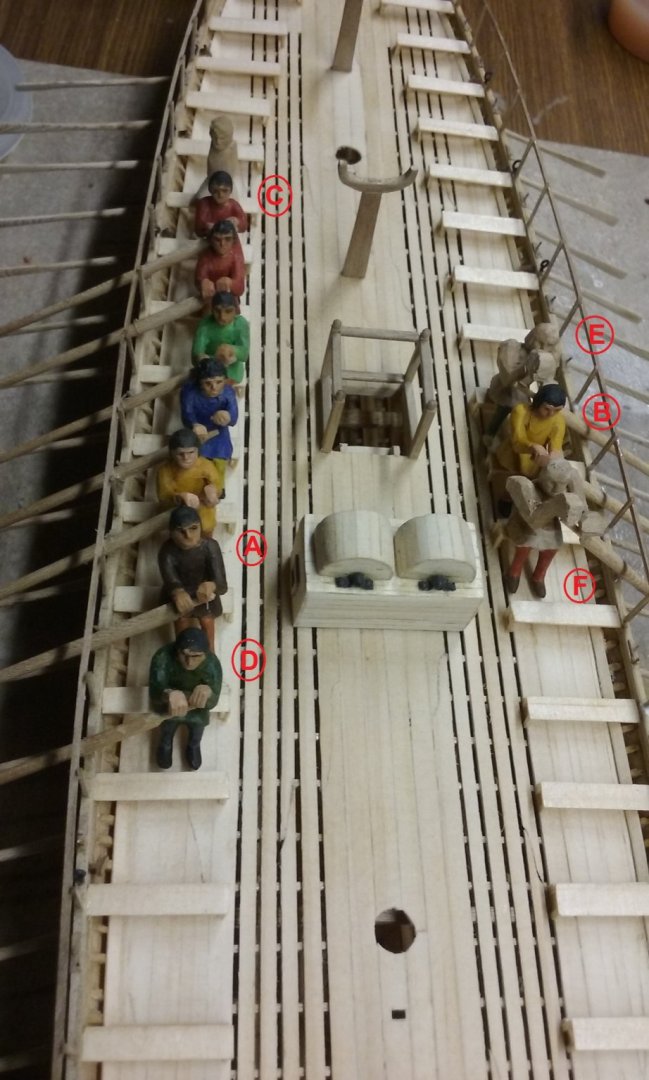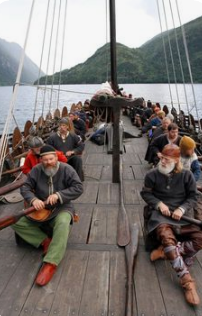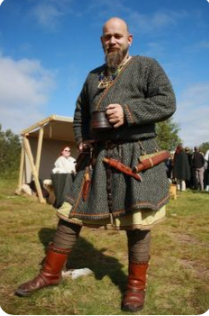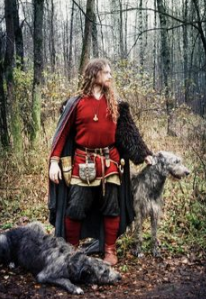-
Posts
7,990 -
Joined
-
Last visited
Content Type
Profiles
Forums
Gallery
Events
Everything posted by Louie da fly
-
Hi PhilB, nice to hear from you again. Those 3-hole blocks are called deadeyes (they resemble a skull) in English, or caps de mouton in French. But there's very little evidence they'd been invented in the 14th century. I've chased up the pictorial record on the fixings of shrouds in the middle ages, and deadeyes just don't seem to be shown at this time - they don't seem to come into use until the 15th century. On the other hand, this is for a RPG, so feel free to do whatever you want. By the way, I liked your half-timbered house. Have you seen Ekis's Mediaeval Fortified Village? On the same line, h
-
50 Years since Brunel's second great ship, the Great Britain was returned to her homeport of Bristol to be restored to her original glory. https://www.bbc.com/news/av/uk-england-bristol-53280875/when-thousands-watched-brunel-s-great-ship-return-to-bristol My wife and travelled to Bristol specifically to see her in 2009. She didn't disappoint. Wonderful memories, but unfortunately my camera chose just that moment to throw a wobbly, so I have hardly any photos.
-
- brunel
- great britain
-
(and 1 more)
Tagged with:
-
Marvellous stuff, and congratulations, you have joined the celebrated ranks of "kit-bashers". Your improvements to the kit are very imaginative - as well as practical - and are definitely making it a better and more impressive model. You've got fine eye and a steady hand. And I learnt a new word - muntins. Never heard of them before. I'll have to start using it from now on to impress people. Keep up the good work.
- 133 replies
-
Hi Jonathan, Just came across this build and it looks really good. The planking looks good, but could you favour us with a photo of the planking from the bow? That's often the most difficult bit and you mentioned having to bend planks into unnatural positions. Seeing the bow planking before you embark on second planking might allow people to make suggestions to make it easier for you.
-
Sounds like a very good idea. Looking forward to seeing the planking complete!
- 29 replies
-
- constructo
- prince
-
(and 1 more)
Tagged with:
-
The "blue" on the viking shields in the link I gave early on in this build is apparently made from wood ash. Perhaps that plus yellow ochre would make a green? Might be a pretty dodgy green, though. On the other hand, it's your model. Depends on how finicky you want to be. But please don't go here :
-
Looking very good, Eilelwen. Sorry to hear you're having trouble with bending the planks. My understanding is that it's heat, much more than moisture, that loosens the fibres in the wood to allow it to bend more easily. But you may just have a dud lot of wood, and be better getting some more. Just a point - before cutting gunports make sure that they are in the right location so your cannons (on their carriages) that rest on the upper deck and the false deck actually will fit through the ports. This is an issue that comes up fairly often - the gunport opening is a little too high or too low for the cannon to poke through. If it's dealt with early you can adjust the heights so it doesn't become a problem later.
- 29 replies
-
- constructo
- prince
-
(and 1 more)
Tagged with:
-

Golden Hind 1577 by goemon - 1:150
Louie da fly replied to goemon's topic in - Build logs for subjects built 1501 - 1750
Very nice work. She's looking very good. -
Will do - if they ever let us in with our Victorian number plates . . . A pity, really. I was born in Adelaide, and when we visited a couple of years ago my wife fell in love with the place. (Almost as good as Ballarat!) This is a very nice build. Beautifully crisp work. Pear is a lovely timber. I've been carving with it for years now. Fortunate to have a neighbour with a huge pear tree . . . and the pears are nice, too.
-
Umm, that was a mistake. I thought the further guy was going on the other side of the ship - only realised when it was too late that there'd be two together with matching tunics. (But they're wearing different coloured hose, for what it's worth.) I'm trying to get the colours as much a random assortment as possible (like jelly babies, as in Tom Baker's Dr Who.) Hmm, to a jazz rhythm? Could be interesting, but I think they'd be likely to do thmselves a nasty injury . .
-
Yes, I was trying to figure out how it might be possible to remedy it without a great deal of success. Isn't it possible to dissolve CA with nail polish remover? Otherwise I suppose the only other option is to put it down to experience. Never having attempted to do clinker planking I'm certainly not in a postion to criticise, and in fact I was rather loath to even bring the subject up. IF it was possible to dissolve the glue just at that second frame it might be possible to free the strakes up, let them assume their "natural" shape (i.e. to follow the rest of the curve) and either cut out that side of the frame and replace it, or put a packer in to increase the width of the frame and then cut out the existing part. Just a thought, and it might be completely impractical, but perhaps worth looking at as an option. Having said that, the unevenness isn't terribly obvious and when everything else is added (especially the shields), it will probably become quite hard to see.
-
Horrifying idea! (And yes, I actually have heard of Gene Krupa!) Fortunately, despite what Hollywood tells us, the rhythm for the rowers - at least in Byzantine times - was given not by a drummer but by a flute-player. James Galway, perhaps? And thanks, Mark, for the compliment.
-
Thanks, Binho. And thanks everybody for the likes. Moving ahead a bit faster now. Here are the latest additions: Figures B and C are painted and glued in place. Figure D now has his arms glued on and filler added, ready for trimming to final shape. And I've added oars for two new starboard oarsmen, who are temporarily glued to their benches awaiting arms. Later in the same day: Figure D is now painted and glued in place. The new starboard oarsmen (E and F) have their arms temporarily glued on, awaiting bamboo pivot pins to locate them on the bodies so they can then be carved to shape. You can't see it on the photos, but I've also put in some short brass pins alongside the tholes of the oars I'll be adding next. So that's 8 oarsmen completely done, another two in progress, and two more just about to be started.
-
I'd try it on scrap first to see if you like it. Personally, I find yellow ochre, red ochre and black and white (all possible with the materials of the day) a very attractive combination. I hadn't thought so until I saw a tv show where someone did a recosntruction of an Ancient British chariot and painted it in the colours above with the materials available nearby. Not sure how you'd make green paint back in the day. But it's your model - do what suits you.
-
I used to hit this problem, too. I finally worked out how to fix it. Once you're in "Edit" you have to go down to the bottom of the post and delete the pictures from "uploaded images". Then you have to go back to the post itself, and "cut" the unwanted photos from the bottom of the post - otherwise they'll come back. That will get rid of them permanently. Hope that is explained properly and is of use to you. The ship is looking good by the way and that mast step is particularly nicely done. But I noticed in one of the photos you're about to get rid of (the view from above) there seems to be a small "kink" in the planking on the right near the bottom of the picture (second frame from the bow - or stern - who can tell with these double-ended ships?). Or is that just a fault of the photo?
-

non-ship review 1:24 Istanbul diorama - OcCre
Louie da fly replied to James H's topic in Non-ship kit reviews
That's for sure. The other side of the harbour! I visited Taksim Square way back in '93 and got to the covered market but not the Grand Bazaar (ran out of time). Stayed in a little pension at Sultanahmet, with a roof deck that looked over the Marmara Sea and the Straits. Loved the place! Next time I went back (in 2000) the pension was gone and I stayed in another one (not as good) just out the back of the Hippodrome. Wonderful memories. Oh, and I nearly got run over by one of those wonderful trams because, coming from a country where people drive on the left, I looked the wrong way before I crossed the street (Yeniçeriler Cadessi). -
Perhaps the sewing thread is polyester or nylon, which won't take dyes. It's also a bit difficult to get linen thread to take up dye. Cotton is much better for this.
- 195 replies
-
- lady eleanor
- vanguard models
-
(and 1 more)
Tagged with:
-

Mississippi Sternwheeler by kpnuts
Louie da fly replied to kpnuts's topic in - Build logs for subjects built 1851 - 1900
Hi, Kpnuts. First time I've seen this log. It looks good. Did you end up completing this build? -

Matthias from Berlin, Germany says Hello
Louie da fly replied to victory78's topic in New member Introductions
Yes, I like him too. That's very good - hard to believe he's your first attempt. What's the grain like on linden wood? -

Hello from the not so sunny Spain.
Louie da fly replied to Jandrus's topic in New member Introductions
Welcome Jandrus! Don't forget to start a build log for your HMS Beagle. You'll find quite a few Logs for her on MSW, which you will probably find helpful. Just type Beagle into the search bar at the top of the page. I'm a fan of ships of the 15th century, and the Basques were the leaders in maritime design and shipbuilding at that time and for some time after. Am I right in thinking that Vasco da Gama's first name translates into English as "the Basque guy"? -
Mind if I pull up a chair? That's a very elegant longship. Much nicer in my opinion than the generic Gokstad ship (though I still love the Oseberg ship as well - very beautiful)
-
Don't go there, Cathead! That way lies madness! I've got 48 oarsmen to do, you'd have 58! (I just checked on your build log). And anyhow, if your sail is up, you don't have to have anybody rowing. Add to that, you can buy Viking figures, though there are some pretty bad ones out there. Having been a Viking period re-enactor for over 20 years I know. No, they didn't wear ugg boots, helmets with horns, they didn't look like the guys on the tv series Vikings, they wouldn't have worn armour while sailing (it's heavy, plus what happens if you fall overboard) . . . more like this- not a bad selection (the last one is very high status, and I have to say, super-cool): [Edit]: NOT LIKE THESE! [/Edit] OTOH, if you just want to carve a few crew members, maybe that wouldn't send you bananas. Always nice to have another person on MSW carving figures.
About us
Modelshipworld - Advancing Ship Modeling through Research
SSL Secured
Your security is important for us so this Website is SSL-Secured
NRG Mailing Address
Nautical Research Guild
237 South Lincoln Street
Westmont IL, 60559-1917
Model Ship World ® and the MSW logo are Registered Trademarks, and belong to the Nautical Research Guild (United States Patent and Trademark Office: No. 6,929,264 & No. 6,929,274, registered Dec. 20, 2022)
Helpful Links
About the NRG
If you enjoy building ship models that are historically accurate as well as beautiful, then The Nautical Research Guild (NRG) is just right for you.
The Guild is a non-profit educational organization whose mission is to “Advance Ship Modeling Through Research”. We provide support to our members in their efforts to raise the quality of their model ships.
The Nautical Research Guild has published our world-renowned quarterly magazine, The Nautical Research Journal, since 1955. The pages of the Journal are full of articles by accomplished ship modelers who show you how they create those exquisite details on their models, and by maritime historians who show you the correct details to build. The Journal is available in both print and digital editions. Go to the NRG web site (www.thenrg.org) to download a complimentary digital copy of the Journal. The NRG also publishes plan sets, books and compilations of back issues of the Journal and the former Ships in Scale and Model Ship Builder magazines.



